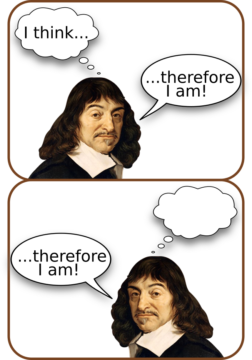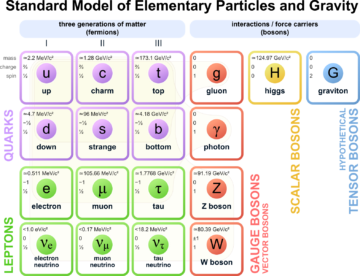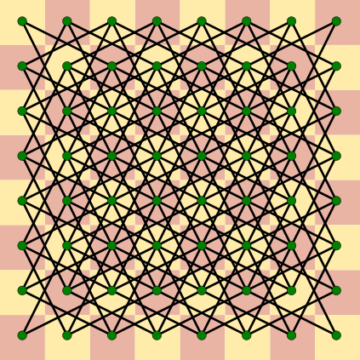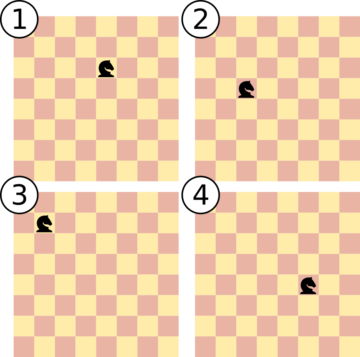by Jochen Szangolies

Zombies have become a mainstay of philosophy as much as of pulp fiction—a confluence that it would be fallacious to assume implies some further connection between the two, naturally. Zombies are beings that act in many ways like living humans—they move around, they interact with the world, and they, to generally horrific effect, consume resources for sustenance—not ending up as which is the typical goal of the protagonists of various kinds of zombie media. Yet, they lack the crucial quality of actually being alive, instead generally being considered merely ‘undead’.
Zombies are thus creatures of lack, creatures that have been robbed of some quality we otherwise think essential. Consider, for instance, the notion of the soulless zombie: a being which, despite acting and reacting just like any other human being—in fact, we might stipulate, in a way exactly paralleling your actions and reactions—lacks a ‘soul’ of any kind. If this is imaginable, then, the argument goes, there’s nothing that you’d actually need a soul for—and hence, we can strike it from the list of essential qualities without any resulting deficit.
A counterpoint to this particular argument is the floating man thought experiment of Ibn Sina (often Latinised as Avicenna), the eleventh century Persian polymath and physician. Ibn Sina imagines being created ‘at a stroke’, fully formed, in a state of free fall, and in darkness. Lacking any external sensory impression, one would still be certain of one’s own existence. But if there is nothing physical one could be conscious off absent such sensory data, then that sensation of being aware of one’s own self must be a sensation of something non-physical—the soul, or Nafs in the Quran. To Ibn Sina, then, the soulless zombie would merely show that the world is not exhausted by the physical, by our behaviors and reactions to external stimuli.
A similar conclusion, although not with something as esoteric as a soul, is reached by contemporary Australian philosopher David Chalmers, whose concept of the ‘philosophical zombie’ introduced this type of argument to the modern study of consciousness. Chalmers argues that a particular notion of ‘p-zombie’ is conceivable—namely, a being physically identical in every way to you, and yet, devoid of any inner experience. Furthermore, he holds that if the p-zombie is conceivable, it is at least in principle possible—but if that is the case, then experience cannot be reducible to physics (since we do, in fact, have inner experience): it is a further fact, and all else being physically equal, might just as well be present as absent.
This counters the doctrine of physicalism, which we might epitomize as the idea that when it came to the business of creating the world, all God (or Nature) had to do was fix the physical facts. If on the other hand Chalmers is right, it wasn’t time to rest just then: there was still work left over, which at minimum involved fixing the facts of experience.
But like the floating man with the soulless zombie, Chalmer’s p-zombie has a counterpart, intended to bring about the opposite conclusion, namely, the sufficiency of physicalism. This involves what British philosopher of mind Keith Frankish has termed anti-zombies: beings which are merely physical duplicates of us, thus leaving behind any ‘further facts’ the p-zombie advocate holds responsible for conscious experience, and which nevertheless have the same conscious experience as we do—thus, if such beings are conceivable, showing the alleged dependence of consciousness on further facts to be illusory.
Anti-Zombies And The Core Theory

The argument has recently been framed in particularly lucid terms by theoretical physicist and science communicator Sean Carroll, who has expanded on it on his blog, Preposterous Universe. Carroll starts with what he terms the ‘Core Theory’ (CT), the set of laws of physics that describe every phenomenon relevant to everyday existence. His main point is that there is no ‘wriggle room’ regarding this theory: the relevant laws are completely known, and any purported explanation of consciousness must either be consistent with them, or overturn foundational physical notions established to an unprecedented degree of accuracy.
We should, I think, pause a moment here to appreciate what a miracle it is that this Core Theory exists. The physical basis for everything you or I are ever likely to experience within our lives—provided we don’t do something radical, like jump into a black hole—is completely captured by this theory. We might not know some details of the microphysical description—are there strings or not, is spacetime quantized, and so on—but due to the phenomenon of universality, we know that these details simply don’t matter at any scale relevant to everyday existence. Any of the possibilities to ‘complete’ the theory on the smallest scales must yield the same effective description—and therefore, the same CT phenomena. This makes taking the second horn of the dilemma, violating the CT, a highly unattractive option.
So let’s accept the dilemma’s first horn: any theory of consciousness must be in line with the CT. But then, this immediately means that all behavior, all our actions and reactions, all the things we say and even think (for certainly, a difference in thought needs a difference in the physical substrate of the brain), are completely determined by physical facts. Whatever else we might posit, must then, it seems, necessarily be entirely inert, both causally and explanatorily—you can’t, for instance, posit the pain in your toe after stubbing it as an explanation for the choice selection of curse words you emitted subsequently, if you are also intending to posit that pain to be something non-physical.
One might then propose that well, so consciousness isn’t the reason for my behavior, but it’s still the reason for all of my experiences—relegating it to a merely epiphenomenal status, along for the ride, but not in the driver’s seat, so to speak. But that falls short: because in such a scenario, it also follows that not only have our actions and speech acts never been caused by our inner experience, neither have our thoughts, or emotions, or anything else that requires some correlated physical effect—that is, when you think about your conscious experience, you’re not thinking about your conscious experience, as that experience can’t be causally connected to your thoughts. Indeed, you couldn’t even know your own conscious experience, as that experience can’t be the origin of the particular kind of brain-wiring correlating with your knowledge. This doesn’t require that your knowledge is identical to this brain-wiring—that would be question-begging—but merely that there is a correlation, such that for every item of knowledge there is some brain-feature you can point to that reflects it. As this brain-feature then can’t be causally influenced by your conscious experience, you can’t say that you have this knowledge due to that experience, and hence, have in the last consequence no knowledge of experience.
So, this road seems to lead us to complete irrelevance of our conscious experience (if it isn’t physical) for, well, anything at all, really. The non-physical, given the inviolability of the Core Theory, can’t make any sort of mark on the physical. But then, in what sense is it even there?
Does this then lead us to either accepting physicalism or rejecting the CT? If so, this would be a highly intriguing and powerful result. But I think we’ve been getting ahead of ourselves. The Core Theory, we have surmised, provides a complete theory of the physics of everyday life. But that doesn’t quite entail that it encompasses all there is to everyday life. This needs a commitment to a rather strong epistemological thesis, namely, that physics is exhaustive: in other words, that it’s possible to have what Carroll calls the ‘P-World’, a world given by just the laws of physics, and nothing else. But this, I believe, misunderstands the relationship between world and theory (for some ideas on that relationship, see my previous essay). The P-World ultimately isn’t a world at all, because physics describes just a bare structure, which lacks the specificity needed to pick out any concrete, actual world. Hence, such a world ultimately turns out not to be conceivable at all—and the argument falls flat.
Mind, The Gap: Three Absences In Physics

Chalmers proposed the p-zombie argument to highlight the so-called ‘Hard Problem’ of consciousness: the notion that physics tout court does not suffice to fix the facts of experience, and that thus, something besides must be needed to explain them. Carroll’s argument does not propose to fill that gap, but rather, to expel it into a realm disconnected from everything connected to anything else, and thus, make it irrelevant.
But this is not the only lacuna of physics when it comes to actually accounting for our way of being in the world. Here’s a question that the CT can’t answer, but which is trivially answered in the world: what time is it now? You need only look to the clock of whatever device you’re reading this on to divine the answer; but the notion of ‘now’ does not feature in physical theory. This is the problem of tensed time: in everyday experience, time is clearly delineated into past, present, and future. In all of our experience, there is a special moment, the now, the moment we’re actually experiencing, to the exclusion of all other moments. But nothing of the sort is found in physics.
That’s not to say there is no notion of ‘to the past/present of’ in physical theory—it’s not at all problematic, in everyday cases, to say, given two states of a system, which is ‘later’ than the other. Entropy increases to the future, but not the past; the milk being well mixed into the coffee comes later than both being separated. But there is no point, no little arrow on the map, that marks any instant along that progression as ‘now’.
The problem of the now has not received the same discussion, lately, as the problem of the mind has; but it is well recognized. For one example, Albert Einstein, whose theory of relativity provides the most comprehensive account of time available to this day, seriously worried about the problem of the now, holding that ‘there is something essential about the now which is just outside the realm of science’.
But the ‘now’ isn’t the only thing essential to our everyday existence physical theory is mute about. In general, the facts about what philosophers call indexicals—meaning, those facts that pick out a particular experience from all possible experience, such as that you’re having it now, here, and that it is, in fact, your experience—can’t be obtained from a scientific perspective. The view of science is a view from nowhere—but experience is always now, here.
There is an unfortunate tendency to react to this issue by attempting to reify the description—if physical science isn’t able to pinpoint the now, then it can’t be real, and must just be a ‘stubbornly persistent’ illusion. This is especially prominent in theories that allege the existence of a multiverse of some sort: because no unique world can be wrested from the scientific description, all worlds consistent with it must be equally as real.
But what we’re really faced with here is, once again, the problem of structural underdetermination (detailed in this essay). Only the structure of phenomena—the relations in which they stand—is universalizable; hence, only structure can be present in our theories. But that leaves the phenomena themselves underspecified. In scientific theories, we abstract away from the particular to the generic—as we must, to obtain powerfully universal theories—but then, we make the mistake of thinking that this generic part, as all that can be captured in an objective way, must be all there is, or all that matters, at any rate—and then, if we fail to recover the particular, we surmise that this is a problem with the world, or our experience of it, rather than with our theories. It’s a little as if mapmakers, faced with the fact that they can only draw two-dimensional maps, subsequently conclude that the Earth must be flat.
Perhaps a reformulation helps bring out this problem more clearly. In the graphic novel series Watchmen by Alan Moore, the character of Dr. Manhattan has the ability, after some laboratory mishap, to simultaneously experience every moment of his existence. This ‘Manhattanian experience’ is something that is completely in line with the physics of the Core Theory. But it’s not the way we experience the world. Hence, the CT leaves a question open: why don’t we have Manhattanian experience? Why do we, instead, experience the world as a succession of nows?
This question is deeply related to the third omission of the CT: it tells us nothing whatever of how things actually happen. How, that is, if B follows A, A in fact makes it so that B occurs. Again, we can bring this out more clearly by examining radically different pictures of ‘how stuff happens’ that are equally consistent with the Core Theory. I have previously gone through some options in this essay, but for the moment, it suffices to highlight two options: the Infinite Monkeyverse and the Aristocosm.
In the Aristocosm, everything happens via strict causal mediation: causal powers inherent to A make it so that B reliably occurs. In the Monkeyverse, however, every new state of the world is a roll of the die—it bears no inherent connection to whatever went on previously. Yet, both are compatible with the CT.
For the Aristocosm, this is immediate—as long as the causal powers are such that only those events in line with the Core Theory will occur, it will always remain adequate. But in order to have the Monkeyverse conform to the CT, we only need patience—eventually, for any stretch of time, phenomena will succeed one another in a manner consistent with the CT. Consequently, the CT does not itself tell us if there is a causal connection between events, or if we’ve just been getting lucky—on the question of how things happen, it is utterly silent.

This leaves the alleged ‘P-World’ a strange and paltry thing: with just that which is dictated by the CT, there is no now, no here, only nowhere; and there is no way for things to happen, only constraints on their possibility. The laws of physics don’t constitute a world anymore than the rules of chess constitute a game.
But then, Carroll’s argument can’t be carried through: there is no world at all, if we start with just the CT. The P-World turns out not to be conceivable after all. Something else is needed to take the bare structure of physics, and ‘breathe fire into the equations’, to quote the late astrophysicist Stephen Hawking, and make a world for them to describe in the first place.
Here, we already have a fitting candidate, and it turns out that the three great lacunae of physics—the mind, the now/here, and the question of how stuff happens, of the succession of events—are related, after all: intrinsic properties—the relata that underlie the relations, the structure described by physical theory—can serve the role of fleshing out the structure, providing the sequence of nows familiar from everyday experience. Think of the laws of physics, the CT, as providing the film stock on which our experience is recorded. Curled up on its roll, it doesn’t amount to a movie; it’s only once it is is uncoiled, and transported past the projector’s light, that the action starts on the canvas.

The projector’s light is what’s missing from physics—the particular, un-get-atable nature of things that give them their intrinsic, ineffable qualities. This is what singles out one given structure—one possible now—and makes it actual, by providing concrete entities fulfilling the relations physics describes, thus providing the little arrow on the map making the now special. Thus, it produces the sequence of nows as we experience it, and with that, accounts for the succession of events. Moreover, as argued previously, they’re what’s present to us in experience. So in this sense, it is experience—or at any rate, experience’s raw stuff—that makes a world for physics to describe, and trying to think physics without experience—as needed for the anti-zombie argument—amounts to just a conceptual error.
